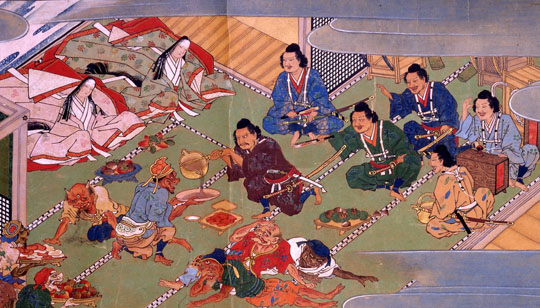Seasons play an important role in Japanese culture, which has long celebrated the appreciation of ephemeral beauty as a reflection of life itself. One of the most important seasons in Japan is New Year's, a time for families to gather and celebrate with several days of elaborate feasts. Traditionally, this holiday fell between late January and mid-February and led directly into spring, until Japan adopted the Gregorian calendar in 1873. Vestiges of this tradition, however, remain apparent in salutations such as "new spring" (shinshun) and "welcome spring" (geishun), somewhat incongruous as they are now written on New Year's cards sent in mid-winter.
Two timely exhibitions at Tokyo institutions are attempting to address the semantic gap by bringing together paintings, objects and fabric works that illustrate the importance of the seasons in Japanese aesthetics, with a focus on the period between New Year's and cherry blossom viewing (hanami) in late March and early April.
In Tokyo's Roppongi district, the Suntory Museum of Art has recently opened the exhibition "Arts for Japanese Hospitality" with works from the museum collection spanning more than 500 years, from a Nambokucho Period (1337-1392) mangalike scroll with drawings of staff preparing a feast to early 20th-century dyed futon covers, given as gifts for weddings and other celebratory occasions. These and other works provide insight into the ideals of hospitality in Japan, as well as the practice of shitsurai, by which hosts arrange artworks, utensils and cuisine to create an environment that will put guests at ease.



















With your current subscription plan you can comment on stories. However, before writing your first comment, please create a display name in the Profile section of your subscriber account page.